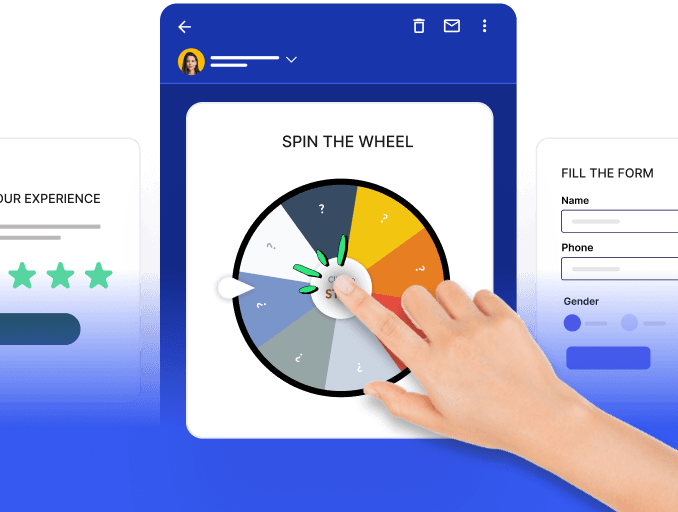Understanding user behavior is fundamental to running a successful business or ecommerce operation. Accurate, relevant data forms the cornerstone of customer insights, guiding businesses in making informed decisions. However, the ethical collection of this data is as essential as its accuracy. Collecting customer data without consent can harm your reputation and also breach trust. This is why, first-party data emerges as the ethical and effective solution to this problem.
In this guide, we will discuss first-party data, the latest developments in its field, things to consider while approaching it, and much more.
Table of contents
What is first-party data?
First-party data is the information that businesses collect directly from their existing or potential customers and target audience through interactions with them. This type of data collection happens in various forms and includes a wide spectrum of details and may include demographic profiles of customers, their purchase history, activities and interactions on the website, and so on.
What other types of customer data are there?
Based on the source of collection or collection method, customer data can be of two more types:
Second-party data: It refers to the specific information that one business collects straight from its customer base and then shares directly with another business. This kind of data sharing usually happens between two companies with mutual consent, collaborations, or agreements for mutual benefit.
Third-party data: It is information that is collected by entities without a direct relationship with the user or the original entity that collected the data. It is aggregated from various external sources like websites, advertising networks, social media platforms, and marketing channels. It is used primarily to gain broader market insights and enhance targeted advertising strategies.
| Aspect | First-party data | Second-party data | Third-party data |
|---|---|---|---|
| Source | Directly from customers and audience | From another business's customer base | Various external sources |
| Collection method | Through direct interactions | Direct collection shared with another business | Aggregated from numerous sources |
| Usage | Personalized email marketing, product development, customer service | Mutual benefits, collaborations | Market insights, targeted advertising |
| Consent | Given by customers directly to the collecting entity | Mutually agreed upon by the involved businesses | Often no direct consent from the user |
| Control | High level of control and relevance | Limited control, dependent on the sharing agreement | Low control, broad and generalized data |
Latest development in first-party data
Today, the dynamics of first-party data are undergoing a notable transformation, propelled by growing privacy concerns and evolving data privacy regulations. Tech leaders like Apple and Google are enforcing tighter privacy measures, leading businesses to depend on their data and customer feedback increasingly. This trend is highlighted by sophisticated data collection methods, including consent management platforms and AI-driven analytics, to personalize customer experiences while respecting privacy boundaries.
Consider GDPR (General Data Protection Regulation) and CCPA (California Consumer Privacy Act) as a good example of data privacy. GDPR empowers folks in the EU to have a say in their data use, while CCPA does the same for Californians. These laws ensure transparency from companies on how they use personal data and give people the power to access or even request the deletion of their data. It's about assuring that privacy isn't just a promise but a real action businesses must take.
Now, the focus is on using open data collection methods, like CRM systems and customer data platforms, to make sure personalization aligns with privacy standards. This shift represents a key change in digital marketing, prioritizing ethical data usage and strategies centered around the customer.
Things to consider when dealing with first-party data
When working with first-party data, it's essential to consider several key factors.
Privacy
- Implement robust security measures like encryption and firewalls to paint a clear picture and keep customer data safe and secure.
- Collect only the data you truly need, minimizing exposure and privacy risks – it's a great way to collect data because it's like making a grocery list and sticking to the essentials.
- Organize and isolate your data at the right time to prevent unauthorized access and mix-ups, similar to keeping personal and work emails separate.
- Educate your team about data privacy to ensure everyone handling data is aware of their responsibilities. It is the best way to make a collective effort to safeguard privacy and a customer's journey.
Legal implications
- Regularly update your understanding of local and global data protection laws.
- Make sure your terms of service and privacy policy are clear, comprehensive, and easily understandable, fully outlining your data collection and usage practices.
- Keep detailed records of all your data processing activities. Think of it as keeping a detailed diary of your data journey that is often legally required.
- Develop a solid plan for handling data breaches, including prompt reporting in line with legal requirements. It’s like having a well-rehearsed emergency drill, ready to execute when needed.
Consent management
- Always get a clear 'yes' from new customers before collecting their personal information.
- Allow customers to opt-out or withdraw their consent, ensuring flexibility easily.
- Regularly renew the consent to confirm the ongoing agreement, similar to keeping communication open.
- Educate customers about the value of giving consent, helping them understand its importance.
How to plan your first-party data approach
Now that we understand the importance of privacy in data collection let us understand how you can plan your first-party data approach.
Step1: Define goals and objectives
Think about what you want to achieve or why you want to collect data from customer profiles. Set specific goals, like increasing conversion rates or improving user engagement. By clearly defining your objectives, you can focus your efforts and select the most relevant tools to help you reach your goals.
Step2: Identify data sources and data types to be collected
Once you have defined your goals, decide on the types of data you need, such as demographic data, customer behavior data, or customer preferences.
Next, you’ll identify where this data can be collected from, like website traffic, interactions during a customer journey, or social media engagement. Lastly, this ecommerce analytics will help you choose the appropriate tools for gathering the data, for example, Google Analytics for tracking specific events.
Step3: Develop a strategy for standardizing data
In the last step, focus on standardizing your data collection methods. This means using the same tracking parameters across the board, setting up a standard way to track events, and using consistent names for tags and variables. Doing this will ensure your data is accurate, reporting becomes easier, and you can combine data from different platforms more effectively. This approach helps you get the most out of your first-party data.
Conclusion
With the phase-out of ad cookies by giants like Google and Apple, we're waving goodbye to the easy third-party data era. It's a clear signal to focus on the goldmine you already have: first-party data. Harnessing this data isn't just about adapting to changes; it's about setting the stage for lasting success. By now, you should have a solid understanding of first-party data. This will help you design more targeted marketing strategies, and advertising campaigns and connect better with your audience.







